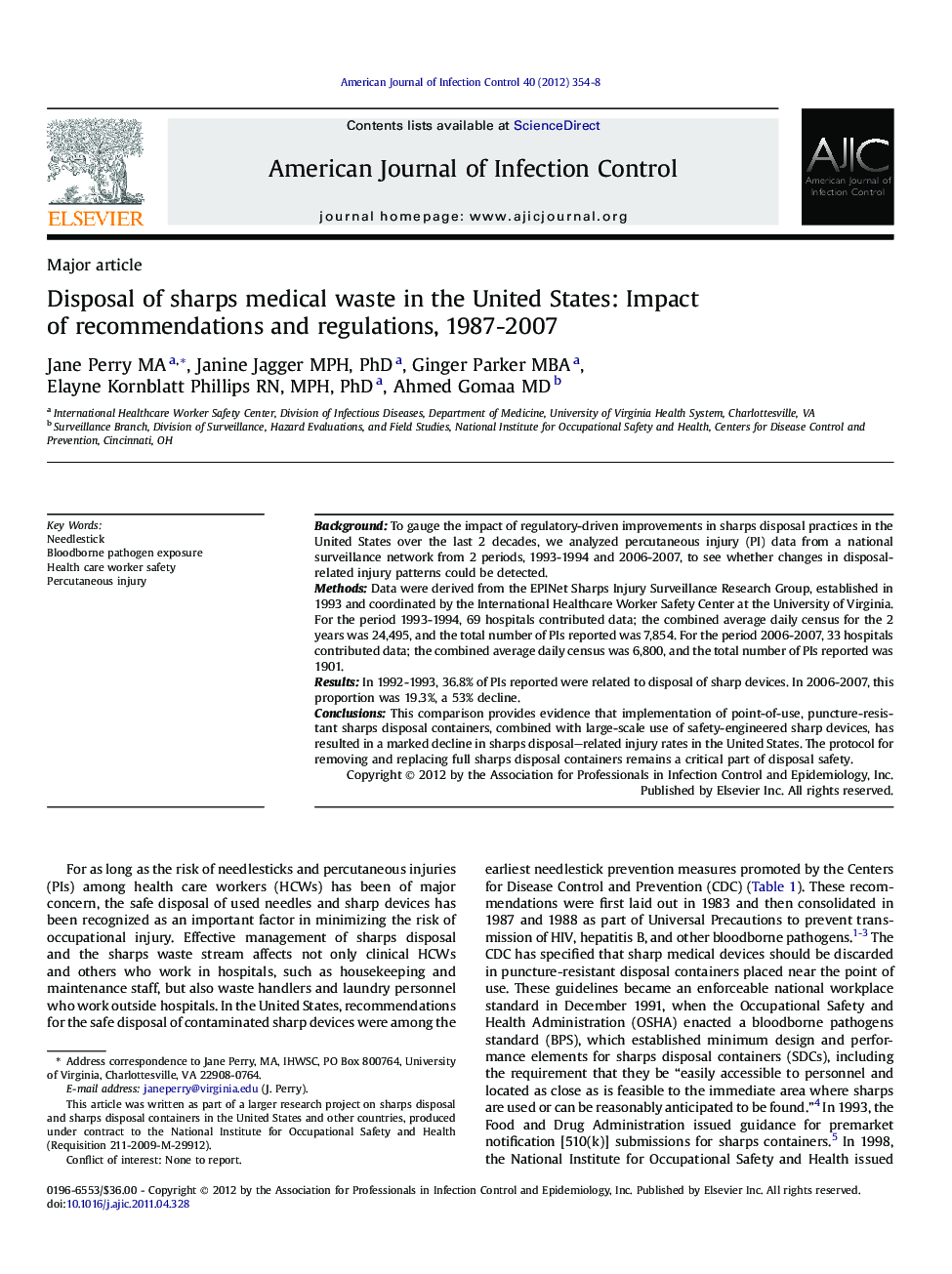| Article ID | Journal | Published Year | Pages | File Type |
|---|---|---|---|---|
| 2637942 | American Journal of Infection Control | 2012 | 5 Pages |
BackgroundTo gauge the impact of regulatory-driven improvements in sharps disposal practices in the United States over the last 2 decades, we analyzed percutaneous injury (PI) data from a national surveillance network from 2 periods, 1993-1994 and 2006-2007, to see whether changes in disposal-related injury patterns could be detected.MethodsData were derived from the EPINet Sharps Injury Surveillance Research Group, established in 1993 and coordinated by the International Healthcare Worker Safety Center at the University of Virginia. For the period 1993-1994, 69 hospitals contributed data; the combined average daily census for the 2 years was 24,495, and the total number of PIs reported was 7,854. For the period 2006-2007, 33 hospitals contributed data; the combined average daily census was 6,800, and the total number of PIs reported was 1901.ResultsIn 1992-1993, 36.8% of PIs reported were related to disposal of sharp devices. In 2006-2007, this proportion was 19.3%, a 53% decline.ConclusionsThis comparison provides evidence that implementation of point-of-use, puncture-resistant sharps disposal containers, combined with large-scale use of safety-engineered sharp devices, has resulted in a marked decline in sharps disposal–related injury rates in the United States. The protocol for removing and replacing full sharps disposal containers remains a critical part of disposal safety.
